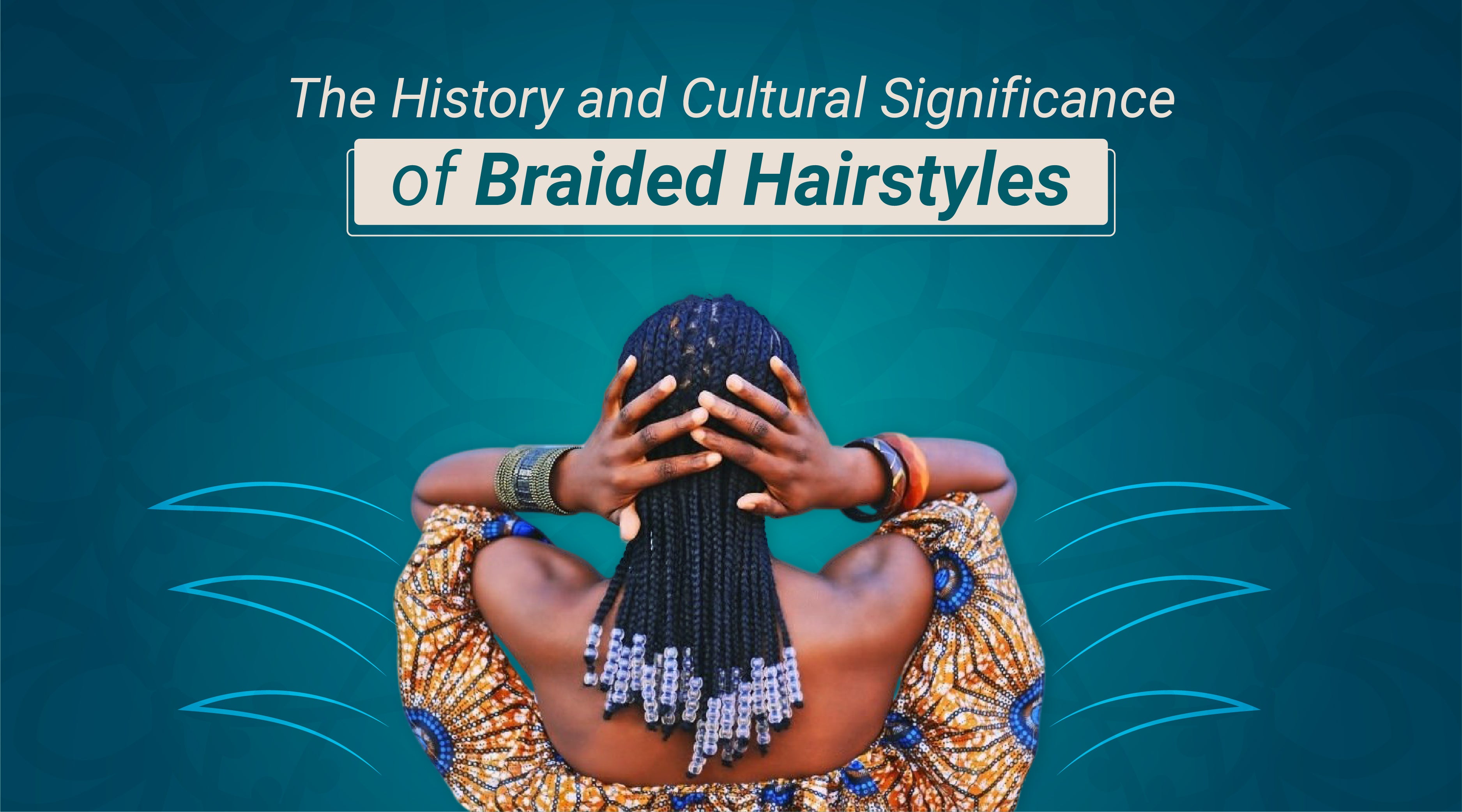Tresses with Tales: The History and Cultural Significance of Braided Hairstyles

Step into a journey where strands become storytellers, connecting personal identity, tradition, and beauty across the diverse cultural history of braided hairstyles.
Throughout history, hairstyles have played a vital role in expressing our individuality and reflecting our cultural roots. Among the vast array of hairstyles found worldwide, braids hold a special and captivating place. The art of braiding, skillfully weaving strands of hair together, carries a profound history and cultural importance that spans across continents and generations. Join us on this fascinating journey as we delve into the mesmerizing world of braided hairstyles, uncovering their captivating stories, cultural significance, and lasting influence on fashion and personal style. Get ready to be inspired by the timeless beauty and rich heritage of braids!

Ancient Origins of Braided Hairstyle
Braided hairstyles have roots that trace back thousands of years. Archaeological findings indicate that braiding was practiced in ancient civilizations such as Egypt, Greece, and Rome.

In ancient Egypt, elaborate braided styles adorned both men and women, reflecting their social status. Intricate braids were not only fashionable but also served as a way to protect the hair from the desert climate. The Egyptians believed that the way the hair was styled had spiritual significance, and braids were often associated with religious rituals and ceremonies.

Braiding Beyond Africa
While braided hairstyles are often associated with African cultures, it is essential to recognize that braiding transcends geographical boundaries. Indigenous peoples of the Americas, such as the Native Americans, have a long tradition of braiding their hair.

Braids were intricately woven with symbolic elements, telling stories and preserving cultural heritage. Similarly, in Asian cultures, braided hairstyles have held significant meaning. In China, for instance, the hairstyle known as "lian zi," or the "lotus bun," is a traditional bridal style representing purity and fidelity. Braiding also holds cultural significance in Indian traditions, where intricate braided hairstyles like the "juda" are adorned with flowers and jewelry during weddings and festivals.
The African Influence
Various African cultures have embraced and perfected the art of braiding. Braided hairstyles hold great significance in African traditions and serve as a form of artistic expression, cultural identity, and social communication.
African braiding techniques have been passed down through generations, with each style carrying its own unique symbolism and meaning. Different patterns, designs, and braiding methods are used to create intricate and beautiful hairstyles that vary across regions and communities.
Braids in African culture are not just about aesthetics; they also hold practical value. They provide protection for the hair from the elements, allow for easy maintenance, and can be adorned with various accessories, such as beads and shells, to enhance their beauty.
Moreover, braiding serves as a bonding experience within African communities. It is often a communal activity where family members or friends come together to create elaborate braided styles. This fosters a sense of unity, strengthens relationships, and passes down cultural heritage from one generation to another.
The influence of African braided hairstyles can be seen worldwide today. They have gained immense popularity, with people from diverse backgrounds appreciating and adopting these styles as a celebration of African culture and beauty. Braided hairstyles have become a powerful form of self-expression, promoting diversity, inclusivity, and appreciation for the rich history and traditions of African people.
Braids as a Form of Resistance

Braided hairstyles have also significantly influenced resistance movements and cultural pride. During the era of slavery, braiding became an act of defiance against the oppressive forces that sought to erase African cultural identity. Enslaved Africans used braids to communicate, concealing messages and maps within intricate patterns.

These braided hairstyles served as a powerful expression of resistance and cultural resilience, providing a sense of unity and strength among the oppressed. Braids became a symbol of freedom and identity, allowing individuals to maintain a connection to their heritage and assert their humanity in the face of adversity.
Furthermore, braids have been used as a form of protest against discriminatory policies and cultural appropriation. Activists and individuals have used their hairstyles as a statement of resistance, reclaiming their heritage and demanding recognition and respect for their cultural practices.
Through braided hairstyles, people have reclaimed their agency, asserting their cultural identities, and challenging societal norms that have historically marginalized and suppressed diverse hair textures and styles. Braids have become a symbol of strength, unity, and the ongoing struggle for social justice.
In this way, braids transcend their aesthetic appeal and carry deep cultural and political significance, making them a powerful tool for resistance and a means of reclaiming one's heritage and identity.
Contemporary Impact and Empowerment
In recent decades, braided hairstyles have experienced a resurgence, gaining popularity and becoming a symbol of empowerment, self-expression, and cultural pride. The rise of celebrities and influencers embracing braids in their public appearances has helped promote diverse braiding styles and encourage people of all backgrounds to celebrate their own heritage. Braids have become a mainstream fashion statement, gracing red carpets, magazine covers, and social media feeds. Moreover, the natural hair movement has empowered individuals to embrace their natural texture and explore braided hairstyles to express their unique beauty.
Braided Wigs
Braided wigs are modern versions of braided hairstyles that replicate the essence of true braided hairstyle beautifully. One of the great things about braided wigs is their ability to offer endless possibilities. You can experiment with different braid types like box braids, cornrows, Senegalese twists, or even a combination of styles.
Braided wigs are not only a fashion statement but also a practical solution. They can protect your natural hair from daily styling, heat, and environmental damage, allowing your hair to grow and thrive while still enjoying the beauty of braided hairstyles. Plus, they can be a real time-saver for those busy mornings when you need to look fabulous in a hurry!
By embracing and appreciating the cultural significance behind braided hairstyles, we can celebrate diversity, promote inclusivity, and pay homage to the beauty and craftsmanship of this timeless tradition. Whether donned for fashion, cultural pride, or personal expression, braids hold a special place in human history, reflecting the diverse stories and experiences that make up our global heritage. They symbolize the enduring power of self-adornment and the importance of honoring our roots.
So, let’s continue to cherish and explore the world of braided hairstyles, recognizing their significance as more than just a passing trend. Let us acknowledge the artistry and cultural richness they embody, fostering a greater understanding and respect for the multitude of traditions that have contributed to this remarkable legacy. In doing so, we can weave together a tapestry of appreciation, love, and celebration for the incredible diversity found within our shared human experience.









